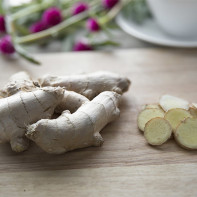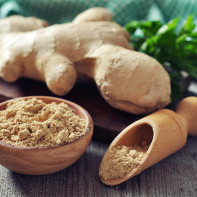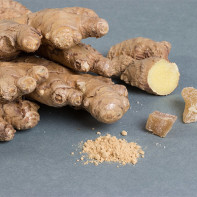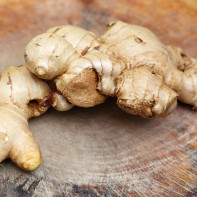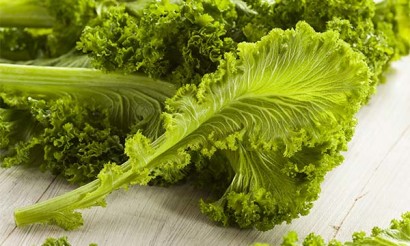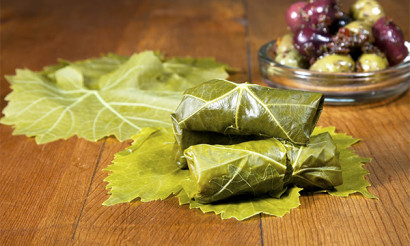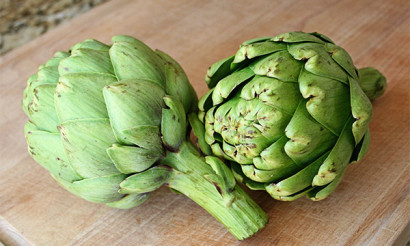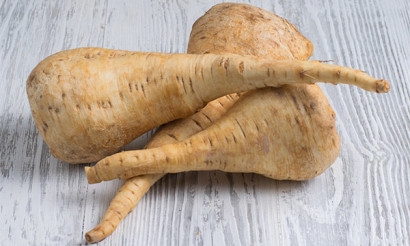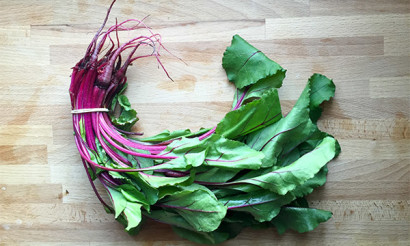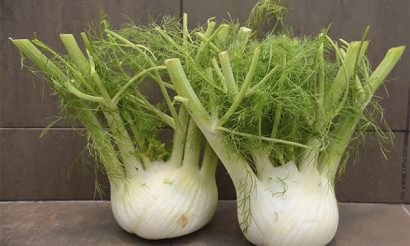Ginger: useful properties and contraindications
Ginger is a unique medicinal plant, the history of its use is many centuries old. But for all its positive effects on the body, you should not ignore the contraindications that this product has as well. With particular caution, you should use the spicy root for people with chronic diseases.
- What does ginger look like and where does it grow
- Composition and calories
- Useful properties of ginger root
- General benefits
- For Women
- For Men
- In Pregnancy
- Breastfeeding
- For children
- When losing weight
- The benefits and harms of ginger tea
- How to brew
- Pickled ginger: benefits and harms
- How to Pickle
- What is dried ginger good for?
- How to Dry
- Ginger root in medicine
- Diabetes Mellitus
- For pancreatitis
- For gout
- For gastritis
- For bowel
- For constipation
- For the liver
- For cholecystitis
- For pressure
- Ginger in cosmetology
- For Face
- For Hair
- Cooking
- Harms and Contraindications
- How to Choose and Store Ginger Root
- Can I Freeze?
- How to eat ginger root
- How to peel it
- Can I Eat It Raw
- Can Ginger be Gingered with Animals
- Interesting Facts about Ginger
What does ginger look like and where does it grow?
Many people are well aware of what a ginger root looks like. It is intricately shaped, round in diameter, and covered with a thin but tough skin. The plant itself is shaped like the reed we are used to, but its scaly stems can grow up to 2 meters long. The herb blooms to form cone-shaped inflorescences in bright pink, orange or brown, but ginger does not bear fruit. Propagated by cuttings from the root.

It is sensitive to the lack of light and moisture, so a tropical climate is considered the best climate for ginger. The herb can be found in southeast Asia, parts of Africa and most of South America.
Fact! Dried ginger root has more spice than fresh ginger.
It is noteworthy that ginger grown in China often contains nitrogen compounds in excess of the allowable standard. Such a product should not be used in food or for medicinal purposes.
Composition and calories
Ginger root is a low-calorie product, with only 80 kcal in 100 g. At the same time, it has a unique valuable composition:
- Essential oils - not only give a characteristic aroma, but are also one of the main components, due to which ginger is used for treatment.
- Amino acids, including essential amino acids - they help to strengthen vascular walls and also take an active part in the generation of muscle fiber cells.
- Unsaturated fatty acids that support lipid metabolism at the proper level.
- Minerals, including rare zinc and chromium, which are scarce in most people's daily diets.
- Fiber is a universal aid to the digestive and immune systems.
- Vitamins (A, B, C).
- Curcumin - a substance that exhibits bactericidal properties and has a stimulating effect on the immune system.
- Gingerol - a compound that speeds up metabolic processes in the body and contributes to the breakdown of excess fat deposits.
- Capsaicin - an alkaloid that helps to relieve pain and inflammation.
Useful properties of ginger root
Overall Benefits
This product has a unique effect on the body. It can be used fresh, dried, pickled. Its effect is manifested as follows:
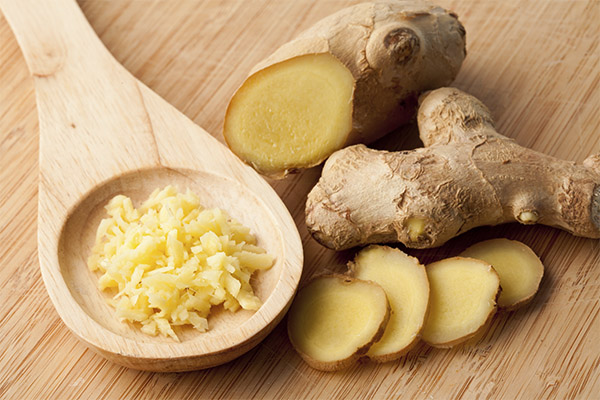
- Ginger normalizes metabolic processes.
- Fatty acid synthesis under the influence of the root comes back to normal, with deposited lipids begin to break down into simple compounds.
- The plant is a natural laxative. It has a mild effect, while not injuring the intestinal wall.
- The product improves digestion and absorption of nutrients and breakdown products.
- Under the influence of acids and minerals from ginger improves the condition of the gums and teeth. However, to achieve a tangible effect, you need to chew the root regularly.
- Various products from the plant successfully eliminate the symptoms of nausea, which is faced by women in the first trimester of pregnancy and travelers suffering from seasickness.
- The analgesic effect of ginger is known. It relieves mild headaches and also helps ease muscle spasms.
- Spicy root products have a calming effect on the nervous system, help relieve chronic stress and help fight insomnia.
- The alkaloids and amino acids and fatty acids in ginger support the heart muscle, help oxygenate it, and strengthen the walls of large vessels and capillaries.
- Due to its spiciness, ginger has anthelmintic effect, so it can be used both for prevention and treatment of parasitic diseases.
For some ailments, ginger is used most often. For the most part, the treatment proves effective:
- In the early manifestations of diseases of the joints and connective tissue;
- Vascular diseases such as atherosclerosis and varicose veins;
- Burn injuries and inflammations of soft tissues;
- migraines, mild headaches, and toothaches;
- diseases of the respiratory system, including those of viral origin.
For women
Ginger is a valuable product for women's health. It not only relieves nervous tension, strengthens the immune system and speeds up the metabolism, but also has a positive effect on the genitourinary system. This product is able to relieve mild inflammation in the female reproductive organs, and also helps keep the uterus toned, which is important for a regular menstrual cycle and the normal work of the reproductive system in general. By consuming ginger root during periodic discharge, you can get rid of painful sensations. In addition, it helps in the fight against stress and fatigue.
A number of studies have shown that women who regularly consume ginger root as a general tonic are much less likely to experience genital diseases.
For men
The amino acids and vitamin C contained in ginger root are valuable to the male body. These substances stimulate conduction in the muscles of the genitals, so that blood circulation in the groin area is accelerated. This effect is a prevention of prostate inflammation. In addition, ginger acts as a natural aphrodisiac for men and also stimulates thought processes in the cerebral cortex.
Another benefit of the plant is the strengthening of blood vessels. Statistically, it is the male population that is more susceptible to strokes, so maintaining the tone of the vascular walls is one of the main effects of ginger.
When pregnant
Ginger will help to alleviate the symptoms of toxicosis in the first few months of pregnancy. But from the second trimester, it is strictly forbidden to use it, because the stimulation of the uterus during this period is extremely undesirable and dangerous for the fetus.
In the early terms, with the help of ginger root, you can quickly cure colds, as well as strengthen the immune system to facilitate the further course of pregnancy.
When Breastfeeding.
Ginger root tea is known among breastfeeding mothers as a means to increase lactation. However, it should be taken into account that the product is primarily a spice that can cause allergies. Therefore, you need to follow certain recommendations when consuming this remedy:
- If the baby is found to have hypertonicity, the mother should not consume ginger root, because it has a stimulating effect on the baby's nervous system through milk. For the same reason, it is better to plan the intake of ginger drink in the first half of the day.
- The use of the spicy root as a food by a nursing mother is allowed 2 months after delivery. The intake should start with a small amount. It is better to limit it to 1 tsp per day, and you should watch the baby's reaction to the spicy product.
- If a woman has any postpartum inflammatory foci (e.g. hemorrhoids), ginger should not be consumed. It can aggravate the problem and cause bleeding.
For children.
Ginger acts as an immunomodulator, so for children it is an effective way to support the body during the cold season. In addition, this product is completely natural.
More often than not, children take ginger tea well, and if you add honey to it, they will drink it with pleasure.
However, before you start treatment or prevention for a child, you should consult a pediatrician and make sure that you are not allergic to the spicy root.
When using ginger in children, caution should be exercised and the following recommendations should be followed:
- Children under the age of 2 years is a strict contraindication to the use of ginger in food.
- It is better to use freshly peeled and crushed root of the plant for children's food. Powdered form is undesirable because it may contain trace amounts of harmful impurities that can affect the immature body in unpredictable ways.
- Giving your child ginger root, you should observe the daily quota. Exceeding the dosage of 0.5 teaspoon per day can provoke allergies.
Children can be given the product not only to treat colds and diseases of the bronchopulmonary system, but also to restore normal digestive function in case of vomiting or diarrhea.
For weight loss
The plant is also widely used for weight loss. There are a large number of recipes for drinks with ginger root, which help in breaking down fat deposits, speeding up the metabolism and getting a trim body shape.
It should be noted that the result of taking ginger can be achieved only if you take beverages containing it on a regular basis.
In addition to a tangible fat-burning effect, ginger has a positive effect on digestion in general. Many women who have gone on a diet with the addition of this spicy plant to their diet have noted that its use helps them switch to a more balanced and healthy diet.
The most popular companions of ginger root for weight loss are:
- kefir;
- turmeric;
- hot pepper;
- lemon.
Those who cannot do without sweetness in drinks, even while on a diet, use honey as a sweetener. It not only complements the taste and makes it more pleasant, but also supplies the body with additional nutrients.
The benefits and harms of ginger tea
Tea with ginger is a real panacea for those who often face a runny nose and weakened immunity. The drink has a number of beneficial properties:
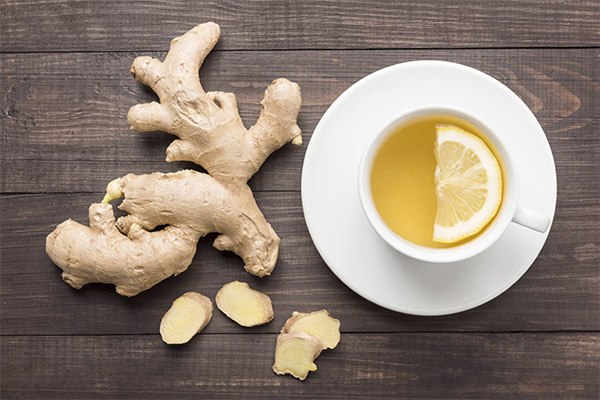
- It relieves inflammation and promotes healing of small wounds on the mucous membranes of the digestive tract.
- Thanks to the essential oils in the composition facilitates nasal breathing and stimulates blood circulation.
- Increases the overall tone of the body and invigorates.
- It is a prophylactic against cancer.
- Normalizes the acid balance in the stomach, relieves cramps, nausea and dizziness.
- Helps relieve nervous tension.
- Relieves sore throat, relieves coughing and swelling in the nasopharynx.
- Is an aid in the fight against colds.
- Lowers the level of harmful cholesterol in the blood.
- Removes toxins and removes sluggishness in the intestines.
For all its merits, ginger tea also has cautions for use. It should not be used:
- If prone to allergies to this plant.
- Before going to bed, because it can cause sleep disorders.
- In the exacerbation of diseases of the digestive and excretory systems, because some of the active substances of the plant can contribute to the aggravation of problems.
How to brew
A classic tea recipe involves steeping chopped ginger root in steep boiling water for at least 20 minutes. For a richer, more flavorful tea, the chopped root should be simmered in water over low heat for about 10 minutes.
Connoisseurs of the drink note that the richer flavor of ginger tea reveals itself when brewed in a glass kettle.
Pickled ginger: benefits and harms
Surprisingly, ginger in pickled form retains almost the full range of nutrients that are present in the fresh product. At the same time, the caloric value of ginger after pickling is significantly reduced and is only 15 kcal per 100 g of product.
Pickled ginger has a number of useful properties:
- Stimulates the production of gastric juice, thus improving digestion.
- It improves the cerebral circulation and the ability to perceive information.
- It shows itself as an aphrodisiac, and also supports the normal functioning of the organs of the reproductive system.
- Helps to relieve chest breathing in asthma and nasal breathing in colds.
- Helps to eliminate toxins and burn excess fat deposits.
If you eat pickled ginger daily as a condiment to your usual dishes, you can get rid of extra pounds without restricting yourself from eating.
This product can be harmful to women while carrying and breastfeeding, as well as those with a history of digestive tract diseases.
Some connoisseurs of pickled ginger additionally soak it in a sugar syrup and dip it in sugar crystals. Thus a kind of dessert with a sweet and spicy taste is obtained.
How to marinate
As a marinade for ginger, you can use ordinary vinegar. For preparation you will need:
- ginger root (medium-sized - about 100 g);
- wine vinegar (6%) or table vinegar (9%) (150 or 100 g, respectively);
- beet (a small amount for coloring);
- sugar (4 tablespoons)
- salt (1 tbsp.)
- water.
In a saucepan pour water, add salt and sugar, stir, and then pour the vinegar. Put the container on medium heat and bring to a boil. Preliminarily peel the ginger root from the skin and cut it into thin cross-sectional plates.
In a glass container with a lid put sliced ginger, put there a few thin slices of beets. Pour the marinade, which has not yet cooled. Cover the container with the lid, and after it has cooled, put it in the fridge. The marinade marinade time is at least 3 days. Due to the coloring property of beets, the spicy petals acquire a faint pink color.
What is dried ginger good for?
Dried powdered form is the most common form in which ginger is used.
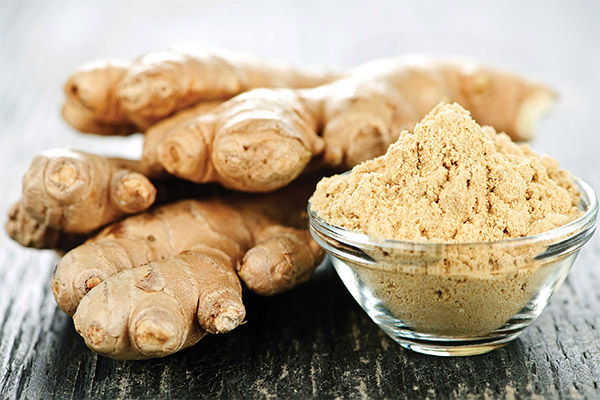
This product has a huge positive impact on the human body:
- improves the patency of blood vessels;
- speeds up metabolic processes;
- strengthens the immune system;
- stimulates mental activity and improves memory ability;
- alleviates the state at colds;
- Has a disinfectant property;
- reduces inflammation.
The harmful effects of the product include:
- The ability to slightly increase blood pressure, which is dangerous for people with problems in the functioning of the cardiovascular system.
- Exacerbation of febrile conditions with elevated body temperature.
- Softening of the edges of internal wounds and ulcers, which can be dangerous for stomach ulcers and a number of other diseases of the digestive system.
- Stimulation of uterine contractions, which is highly undesirable for women in the last stages of pregnancy and during postpartum recovery.
How to dry
There are 2 ways to dry ginger root at home:
- In the oven. Drying is done at 50⁰C (minimum flame) with the door open. Cut the ginger into thin strips or slices, put it on a tray covered with baking paper, which should then be placed in the central part of the oven. The drying process itself is quite long and takes at least 150 minutes. After a long simmering, the temperature can be increased to 70⁰C and keep the ginger in the heat for another 10 minutes.
- In an electric dryer. The process requires minimal effort, but takes a long time. Cut the ginger into thin plates, distribute on the grate of the machine, making small indents. Set the temperature to 60⁰C. Dry for about 7-9 hours. To ensure that the slices of root dry evenly, from time to time they should be stirred among themselves.
Ginger root in medicine
Surprisingly, not only folk healers know about the healing properties of this oriental plant. The traditional medicine has long recognized the benefits of ginger for the body and even admits the advisability of using it as a dietary supplement. However, there are conditions in which the use of the spicy root in food or in the form of a drink can be dangerous.
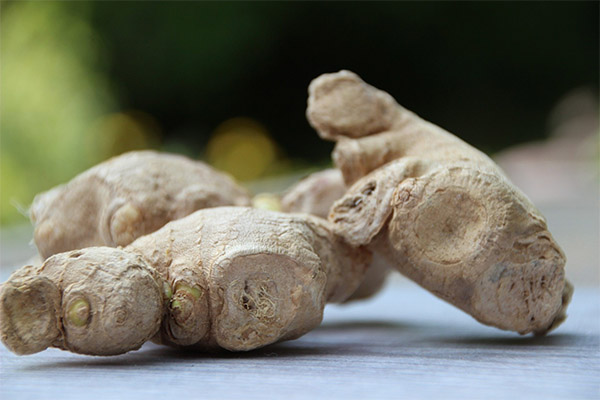
When Diabetes Mellitus.
Ginger is useful exclusively for type 2 diabetes. With a long course of treatment with the introduction of ginger root as an auxiliary therapeutic agent, the body's sensitivity to glucose is increased, which has a positive effect on the overall picture of the course of the disease.
In the case of type 1 diabetes, the property of ginger to reduce blood sugar levels has the opposite, negative effect, for the reason that the mechanisms of development of this type of disease are fundamentally different from type 2. Therefore, when developing type 1 diabetes, it is forbidden to take any ginger-based medications and supplements.
Important: The glycemic index of ginger is 15 units.
In pancreatitis.
Taking products that have a stimulating effect on digestion in pancreatitis is extremely undesirable. Ginger in any form can provoke or aggravate the manifestations of pancreatitis and lead to an increase in pain sensations. It is forbidden to use it for this disease.
If you have gout
Since this disease is associated with metabolic disorders, the use of the spicy root is not only shown, but also highly desirable. Ginger helps to normalize the metabolism, suspend the development of pathological processes in the joints, as well as alleviate the actual manifestations of the disease. With gout, it is recommended to use the plant as part of a tea, combining it with honey and lemon. In combination with oil, ginger used for massage, is able to locally affect the focus of pain and eliminate it.
With gastritis
The inflamed walls of the stomach with gastritis are extremely susceptible to the rough fibers and active substances contained in ginger. The acute form of this disease is a strict contraindication to the use of the root of the spicy plant. In mild forms of gastritis and in remission, it is allowed to use ginger, because it eliminates small areas of inflammation in the stomach and promotes rapid recovery of the organ.
For the Gut
Ginger serves as a digestive aid not only in the stomach, but also in the intestines. Here, the coarse dietary fibers of the plant act as a peristalsis stimulator, fatty acids are involved in metabolic processes, and gingerol eliminates stagnant areas, helping to increase the lumen of the intestine.
The help of ginger is especially important for the elderly, who often face a decline in intestinal activity due to age-related changes. Teas, infusions, and even the usual powder used as a condiment help avoid problems with digestion.
For constipation.
Ginger root and powdered form show a mild laxative effect. The mucous membranes are not injured and inflamed areas are healed. The normal microflora in the intestine is also restored, so that the subsequent release of decay products is much easier.
For the liver
Ginger has a beneficial effect on the liver. Its active components start the regeneration process in this organ, and also contribute to the fastest removal of toxins, accelerate the circulation of bile. The use of ginger root in food is one of the ways to prevent the development of hepatitis.
In cholecystitis
In this case, the ginger is not recommended for cholelithiasis. Its action in this disease is such that irritation of the gallbladder mucosa only increases, and the disease may progress to a more acute form.
When the pressure
There are known cases of using ginger to regulate blood pressure. However, the effects of this plant are unpredictable. When using ginger, blood pressure can both decrease and increase. In addition, if medications are taken at the same time to normalize blood pressure, their activity can also decrease or increase. It all depends on the individual characteristics of the body. Most doctors agree that with serious pressure spikes, it is not worth experimenting with ginger root. If the fluctuations in pulse and pressure disturb only occasionally and insignificantly, the plant can be used in periods of good health, not abusing it.
Ginger in cosmetology
Ancient beauties knew how to keep their faces and hair fresh and young. At the same time they didn't have access to the achievements of science. They used folk remedies, among which one of the main belongs to ginger. Thanks to the unique composition of the masks, extracts and elixirs based on this plant have a rejuvenating, anti-inflammatory effect, and also contribute to the healing of wounds, minor scars, remove stretch marks and traces of eruptions, increase skin elasticity and improve its color.
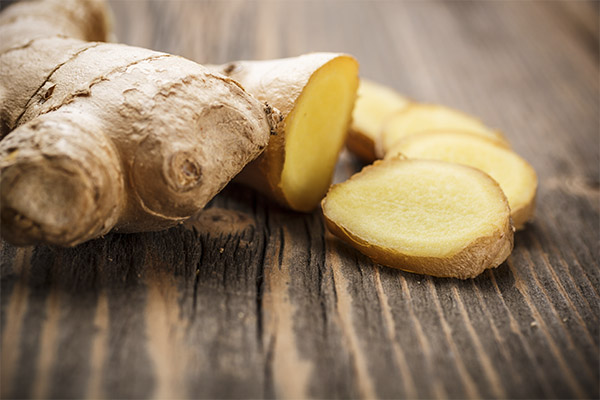
For face
The best cosmetic companions of ginger for the face are citrus fruits, clay (blue or black) and honey.
To prepare facial skin care masks, you can use:
- dried ginger powder;
- crushed root;
- extract of essential oils.
Surprisingly, the spicy root is suitable for all skin types. It dries up oily skin by eliminating excess sebum, and on the contrary, it nourishes dry skin from the inside and helps to saturate it with moisture.
Some mask recipes have reached us through the ages and have proven effectiveness:
Regenerating Mask
To prepare a rejuvenating mixture will require:
- banana (1 piece);
- spinach (1 cup leaves);
- mint (a quarter of a cup of fresh leaves)
- ginger (3 cm fresh root);
- honey (2 tablespoons).
Peel and chop the ginger root, mix with the mint and spinach and grind in a blender. Then add a banana, mashed with a fork. Fill the mask with honey and mix thoroughly. Mass put on the face cleaned from makeup. Time of endurance of means - 15 minutes, after that it is necessary to wash off by gentle movements with water of room temperature.
Mask for face of oily and combined type
For the preparation you need the following components:
- white cosmetic clay (1 tbsp);
- ginger powder (2 tsp.);
- herbal tea (green or chamomile, about 50 ml).
Mix the dry ingredients, and then pour a small amount of tea strained from the brew. Apply to the face with a spatula or a special brush, avoiding the eye area. Wait until the mask dries completely, then rinse with water. Afterwards you can wash your face with cool water to tone it.
Vitamin Mask
Components:
- ginger (2 tbsp powder);
- Pomegranate juice (0.5-1 tbsp.).
Mix ground ginger with juice, apply to the face and decollete area for 20 minutes. Wash the mask with herbal decoction or green tea.
Mask for glowing skin
To prepare it you will need:
- ground ginger (1 tbsp);
- yogurt (1 tbsp.);
- orange juice (1 tbsp.);
- Honey (1.5 tbsp.).
Pour the ginger powder into a container, then pour into it one by one the other ingredients and mix thoroughly. Apply to the face for 20 minutes, then wash with room temperature water.
Mask for skin prone to irritation
Components:
- ginger (2 tbsp.);
- lemon juice (1 tsp.);
- Honey (1 tbsp.).
All the components of the mask to mix and let stand in a cool dark place for at least half an hour. After that, the mixture is ready for application on the face. The exposure time of the mask - 15 minutes, after which it should be removed by a simple washing.
For Hair
As part of hair masks, ginger helps to strengthen hair follicles, as well as helps to eliminate dandruff, get rid of itching, soften dry curls, infuse the scalp with vitamins and trace elements and improve blood circulation. This improves the condition of the hair, as well as accelerating its growth.
To treat hair, you should use ginger masks for at least 2 months with a regularity of once every 3-4 days. These remedies should be applied exclusively to the scalp.
The most effective compositions for strengthening hair:
Revitalizing Mask
To prepare it you will need:
- ginger juice or drugstore extract (2 tbsp);
- aloe gel (3 tbsp.);
- coconut oil (1 tbsp.).
Mix ginger juice with aloe gel and add coconut oil to the mass, which can be melted in a water bath if necessary. Apply the product to the roots, distributing the hair alternately in sections. Sustain for at least an hour, and then wash with normal shampoo.
Soda mask
Ingredients:
- ginger juice (1 tbsp;)
- baking soda (1 tbsp.);
- Liquid honey (2 tbsp.).
Mix the components and apply like a massage oil, rubbing into the scalp. This mask stimulates the activity of the bulbs, helps to exfoliate keratinized particles and improves microcirculation of the skin at the root zone of hair growth. After the massage for about 10 minutes, rinse the mixture with shampoo.
Kefir mask
For the preparation you will need:
- kefir (50-70 ml);
- ground ginger (1 tsp.);
- The yolk of 1 egg;
- honey (0,5 tbsp.).
Mix the ingredients, apply to the hair at the roots, leave for about an hour. To enhance the effect you can wrap the head with a film or a towel. Rinse with warm water. This mask perfectly restores the hair, affected by multiple coloring and styling. To get a lasting and tangible effect, you need to do the hair care procedure regularly for at least a month. Acceptable frequency of mask application is 1 - 2 times a week.
Fragrant mask for hair growth
To prepare it, you will need the following ingredients:
- ginger root (2 tbsp grated);
- cognac (1 tbsp.);
- burdock oil (2 tbsp.);
- rosemary oil (3-4 drops).
Mix the ingredients and apply with massaging movements at the roots of the hair. This mask should not get on the whole length of the hair. Exposure time is about 15 minutes. Rinse with warm water and shampoo.
When applying the mask, special attention should be paid to the parietal area and the parting. These are the parts that are usually prone to more hair loss. Often baldness begins in these areas, so it is important to spend more time on them. This will help to warm up the top layer of the skin, improve blood circulation, resulting in better nutrition of the hair follicles. Thanks to this mask, you can revive even bulbs that have stopped generating hair.
Ginger and coffee mask
Ingredients:
- ginger root (about 3 cm);
- eggs (2 pcs.);
- coffee cake (2 tbsp;)
- Honey (2 tbsp.).
Grate the root on a fine grater, squeeze the juice from the resulting mass (should be about 2 tbsp.), add the eggs. Instead of chicken eggs you can use quail eggs, in which case you will need 4 eggs.
Then mix the mass, shaking a little, then add the coffee and a little heated honey. Apply the remedy along the strokes, making parallel massaging movements.
Cooking applications
Ginger root is a universal spice. It gives dishes a special spicy taste with a hint of spice. The useful properties of the product have led to its widespread distribution. In many cultures there are even traditional dishes with the addition of the root of the plant - ginger ale, gingerbread, beer, bread and even beets, as well as a very popular lemonade.
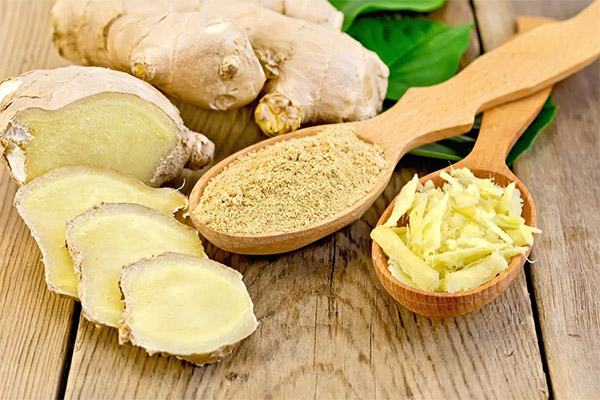
The spice, used as a seasoning for meat, promotes easier digestion of fatty foods, stimulates the production of digestive juices and accelerates the absorption of useful substances into the general bloodstream.
The use of ginger in cooking in today's world is extensive. It is used as a condiment:
- To meat and fish dishes;
- sauces;
- salad dressings;
- marinades;
- desserts;
- baked goods;
- Vegetable casseroles and stews;
- Beverages, such as tea or vegetable smoothies.
There are rules for adding ginger to different dishes:
- In desserts, the spice is added at the very end of the heat treatment.
- When preparing sauces and dressings, ginger should be added along with other spices.
- In meat dishes the spice should be added in the middle of cooking.
- The dough should be spiced while kneading.
Ginger has a fibrous structure, so it is better to grind it with a knife. To do this, peel the root from the skin, removing the upper thin layer, cut into slices, straws and then into small cubes.
If dried ginger is used for cooking, soak it in water for 10-15 minutes before adding it to the dish.
Ginger root goes well with most cereals and can be added to soups. The only cereal that is not suitable for tandem with the spice is buckwheat. All other options for side dishes can be supplemented with a hint of ginger.
The spicy root is able to bring variety to the taste of familiar dishes. It highlights for the eater the flavor characteristics of each ingredient. In Japanese cuisine, pickled ginger is eaten with a meal before proceeding to the next one. In this way, you can taste many culinary masterpieces, which are often combined in one meal.
Harms and contraindications
Ginger contains very active components that can harm in the following cases:
- Women who are in the position. The plant is dangerous because it stimulates blood circulation in the pelvis and the contraction of the uterus.
- People who suffer from hypertension or blood pressure spikes. Most often, such conditions require taking medications that can show unpredictable activity in combination with ginger.
- People with diseases of the gastrointestinal tract in the acute period. In the presence of chronic inflammations and wounds, ginger may not heal them, but rather irritate them even more.
- Diabetics. They should not use this spicy root. And patients with type 1 diabetes are strictly forbidden to take any form of the plant.
- If you have problems with blood clotting and taking medications that affect blood composition, the use of ginger is contraindicated.
How to choose and store ginger root
When choosing roots for your culinary masterpieces, treatments or cosmetic procedures, the following tips should guide you:
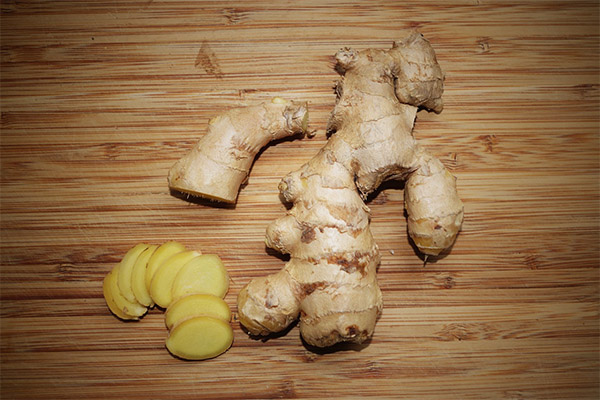
- The most useful is the largest root, because it is the one that contains the greatest amount of vitamins and trace elements.
- Paying attention to the skin, you should look for a smooth, shiny product.
- If the skin has spots, weird spots or potato-like eyes on it, you should better not take it, because it is probably not edible anymore.
- If possible, you should try to bend the root, which should be accompanied by a characteristic crunch.
- You can pry the skin with a sharp object: the fresh product will have juice droplets and will give off a characteristic aroma.
- Never buy parts of the plant that give off an uncharacteristic or unpleasant smell.
- The color of fresh ginger root is light golden, beige.
Store the ginger root in the refrigerator with the skin not peeled. After a week, it is better not to eat the product. For optimal storage, the root should be wrapped in a paper towel and placed in a bag.
There are several ways to extend the shelf life of ginger root for food use:
- Dry in the sun, this extends the shelf life up to 1 month;
- pour boiling water, which can keep in an airtight container for up to two months;
- freeze - 4-6 months;
- freeze - up to 6 months; - dry - up to 6 months.
Can I freeze
There is an opinion that at low storage temperatures ginger loses its useful properties, so freezing is not a priority storage method.
How to eat ginger root
You should not overuse the spice. For adults, the rate of consumption of ginger per day is defined, which is 1 tsp. for ground root, and 1.5-2 tsp. for raw. Children are not recommended to consume ginger before the age of 10 on a regular basis, for them the daily rate is one-third of a teaspoon.
How to puree.
- Most of the useful substances of ginger are concentrated under the skin, so it is necessary to cut it as thinly as possible. You can use a knife, a spoon or a metal sponge to do this.
- A knife is the fastest way to clean the ginger root. It is enough to take a tool with a sharp blade, and in a few minutes the cleaning will be complete.
- The metal sponge cleans the ginger like a scraper. This process is more labor-intensive and takes about 10 minutes.
- Cleaning the root with a spoon is possible when there is no suitable tool at hand. In addition, this way you can peel off as thin a skin as possible, leaving the most useful part of the ginger for cooking.
Can I Eat It Raw
Raw ginger root can be used in all areas where it may be needed. Fresh, it has a more intense flavor. That said, the pickled and powdered forms have virtually the same composition of nutrients as the fresh plant.
Can animals be given ginger
Ginger is just as useful for animals as it is for humans. However, few pets will agree to eat it voluntarily due to its specific flavor. A number of manufacturers of cat and dog food mixes have solved this problem by adding ginger powder to the food. This helps to strengthen the animal's immune system and saturate its body with vitamins.
Interesting facts about ginger
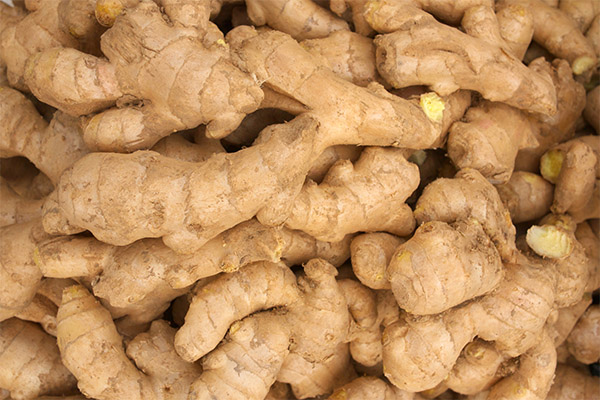
- The Quran calls ginger "the spice from Paradise.
- Familiar to Slavs gingerbread got its name from ginger. In the times of ancient Russia, foreign merchants often brought ginger cookies, which local cooks tried to reproduce, giving the name of their product as a derivative of the brought one.
- The first historical references to ginger are more than 5 thousand years old.
- The ancient Greeks and Romans considered ginger their secret ingredient. They strictly observed the mystery of preparing medicinal potions. They were sure that this plant would keep them young, strong and would give them power.
- Many body care procedures in SPAs are performed with the addition of ginger root extract or ground. Such services include wraps, lymphatic drainage and anti-cellulite massages.
- In medieval England, 0.5 kg of ginger root could be paid for with a whole adult sheep.
- Ginger is one of the few plants whose healing properties are recognized by traditional medicine.
- Ginger root was used as a preventive measure during the world plague epidemic.
- In nature, there is a black color of ginger. The skin of the root remains the same as that of the classic species. Black ginger grows on the island of Barbados. It has a more intense aroma, but it does not taste as pleasant as the usual product, because it is bitter.
- The exotic flower that grows the plant is highly prized among florists and gardeners. Bright, unusually shaped flowers can be grown at home. There are also home-growing techniques for preferential propagation of the rhizome.
- During the Middle Ages in Europe, ginger was used as a flavoring for liqueurs and tinctures.
- In ancient Greece, the spicy root was ground and added to the sourdough when baking bread.
«Important: All information on this site is provided for informational purposes only. for informational purposes only. Please consult with your health care professional before using any of the recommendations. specialist before using any of the recommendations. Neither the editors nor the authors shall be liable for any possible harm caused by materials."

